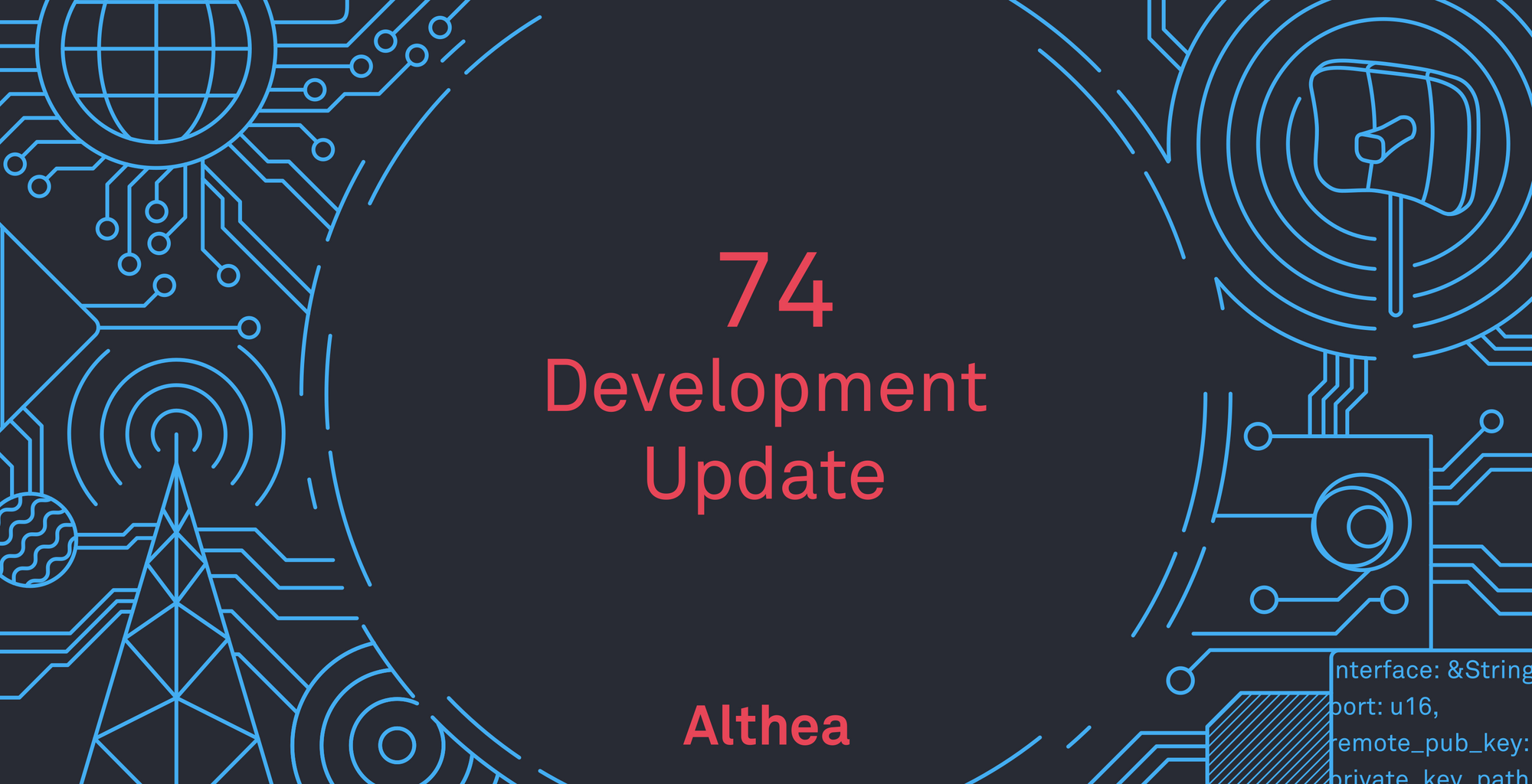Althea Development Update #74: Automated Xdai bridge
what we’ve done in this release is design a fully automated a bridge, the user merely has to deposit ETH and the router takes care of the rest. The money will be exchanged for DAI, then transferred across the cross-blockchain bridge to become Xdai.

The headline feature for Beta 8 is the automated Xdai bridge. Which will allow us to provide one of the most demanded features without compromising on liquidity.
A ‘stablecoin’ is a token that attempts to have a fixed value relative to some peg, usually the US dollar. Allowing the user the advantages of transacting using cryptocurrency without the pitfalls of rapidly changing exchange rates.
There are plenty of stablecoins on the Ethereum blockchain, but you can’t generate a transaction of any kind without paying fees in ETH.
If a user deposits $50 in the DAI stablecoin into their router it's completely useless. Any transaction attempting to move it will need ETH to pay the fee.
We got around this by adding support for the Xdai blockchain, which is a side-chain where transactions can be paid for in the DAI stable coin. This also lets us get away from paying the Ethereum blockchain’s often slow transactions, roller-coaster gas prices, and lack of finality.
It did come with a catch though, users can easily aquire ETH using Coinbase or any one of many other exchanges. Buying DAI is slightly more difficult, and getting XDAI is a pretty technical process. For our main test deployment removing the easy monetary on-ramp provided by Coinbase was too big of a loss.
So what we’ve done in this release is design a fully automated a bridge, the user merely has to deposit ETH and the router takes care of the rest. The money will be exchanged for DAI, then transferred across the cross-blockchain bridge to become Xdai.
When the user wants to withdraw money the funds are brought back to the Ethereum blockchain and deposited into the users wallet as Ethereum for maximum liquidity.
You’ll notice that this is a pretty direct mirror of the setup we propose for the Althea blockchain. We intend to use Xdai as a stopgap and testing ground before moving to our own chain.
Xdai is an Ethereum based proof of authority chain. Whereas the Althea chain will be a Cosmos based distributed proof of stake system.
Proof of authority means that a small set of validators (currently 9 for Xdai) are the definitive validators for the blockchain. This does use a lot less power than mining, but is more centralized. Even the Althea testnet already has more than 20 validators and more are free to join at any time without lengthy vetting and manual addition.
The production Althea blockchain will have a group of at least 100 validators which anyone can join. We’re hoping to be able to expand that to 300 validators.
Cosmos should also be (at least in theory) faster and more flexible in terms of on chain contracts. But mostly we care about the more flexible and open proof of stake system.
What’s New in Beta 8
- Improved and stable Xdai bridge, with graphical cues and much better error handling.
- Updated dashboard with better setup flow and checklist for items to complete.
- Oracle has improved flexibility so that we can easily move existing deployments onto a subnet dao.
- Fixes for Rita crashing when a password is set
- Multi-homed exits are now on by default, increasing reliability.
- Routers now implement a debt limit to better support running with no balance for long periods
- More secure exit signup using libsodium

